
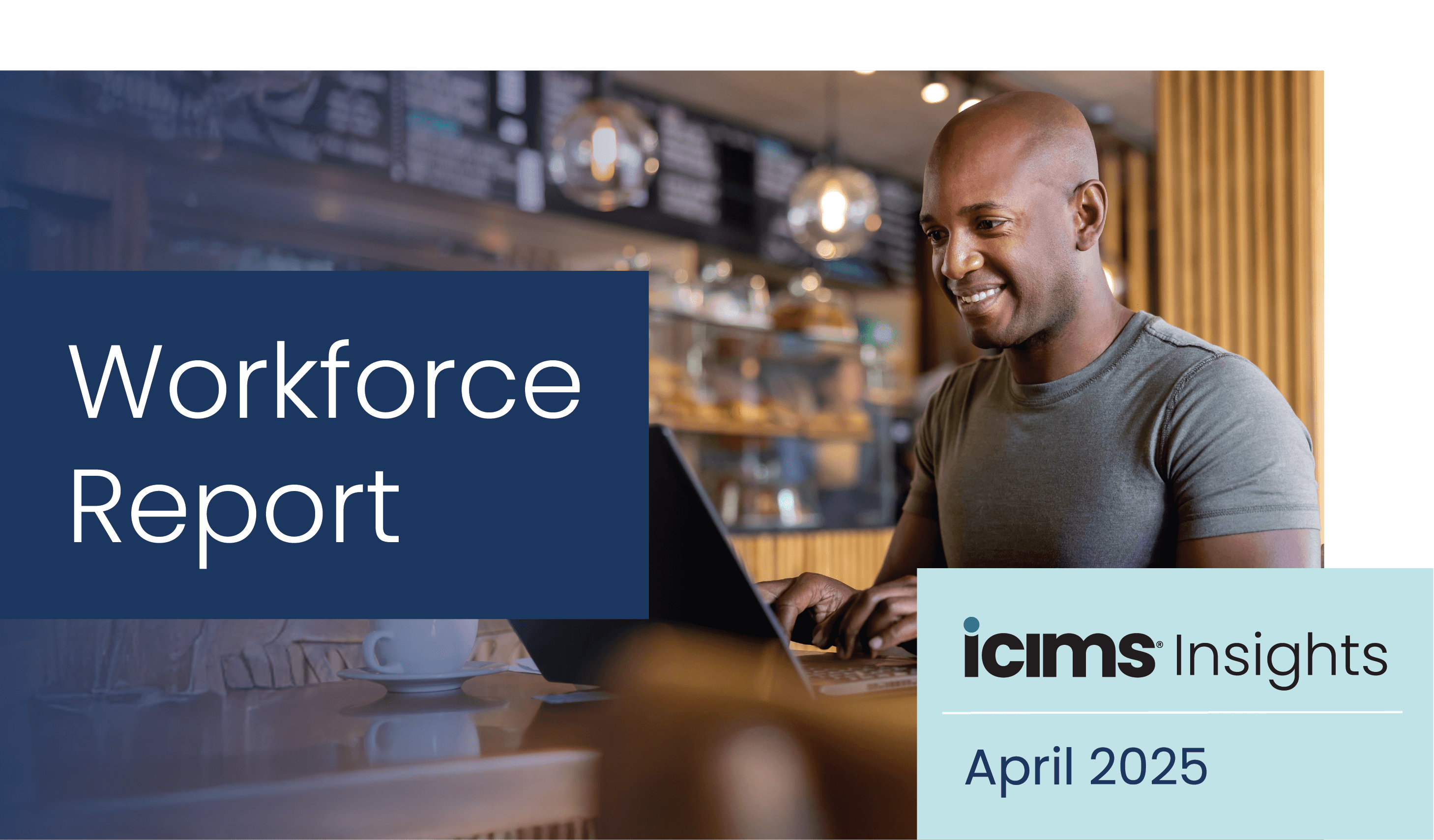
The recent federal workforce reductions have certainly impacted the overall job market. Despite intensifying the ongoing “uncertainty spiral,” this month’s report shows signs of resiliency. Dive in to explore the opportunities and challenges that lie ahead for talent leaders.
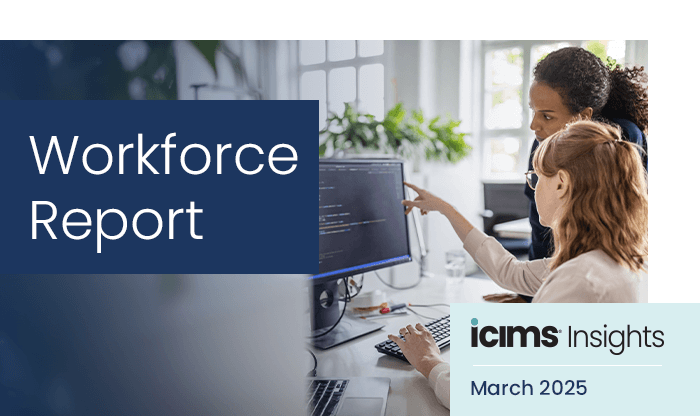
The labor market continues along its path of uncertainty as employers stay paused on opening jobs and hiring. But when it comes to tech-related jobs, it’s all systems go. Dive in deeper with this month’s top labor market findings.

The jury is still out on the direction the labor market will take in 2025, but at least in January, activity has picked up. This month’s data also shows cause for (cautious) optimism in the healthcare sector.

After months of headlines spotlighting labor market struggles across the EMEA region, 2025 is kicking off with renewed momentum for both employers and candidates.

After a year of market fluctuations, 2024 sticks the landing! In this extended report, get a full picture of all employer and candidate activity that came through our hiring platform last year.

It’s the end of the year. But instead of a wrap-up of your most played songs, we’ve got the year’s top workforce trends and data. Use our data insights to inform your 2025 strategy.

Two massive hurricanes. An ongoing machinist strike. The final weeks of a tight presidential election. October brought significant challenges to the US labor market for both candidates and employers.

Every moment of the candidate experience counts. Talent teams can no longer function only as relationship managers—they need to be experience builders.

This month’s holiday hiring preview digs into retail and transportation data. Get a read on the labor market and see how it stacks up against the last few holiday seasons.

The heat is on, and in more ways than one. The labor market has been causing temperatures to rise. Plus, we look at which tech-related positions remain smoking hot.

The heat is on, and in more ways than one. The labor market has been causing temperatures to rise. Plus, we look at which tech-related positions remain smoking hot.

This month, iCIMS Insights digs into employer and candidate activity in the EMEA region. See how consistent levels of job openings and rising application volume have shifted power back to employers.

We asked more than 1,000 HR leaders what they’re planning for – and worrying about – in an uncertain hiring climate. Get the report to learn what keeps CHROs up at night, and how the role continues to evolve.

This month, we look at entry-level hiring data to get a read on the Class of 2024’s expectations and the job market they are entering. So far, it seems activity has remained consistent.

The headlines suggest the strong job market is beginning to ease but according to iCIMS data, hiring did not slow down last month. Get the full report to see how leader and employee sentiments are playing out right now in the labor market.

The 2024 labor market seems to have found its groove. This month’s report explores the slight upticks in applications and openings. Plus, zoom in on retail industry trends.

This month’s report introduces data from our EMEA customer base. Global organizations will get a read on employer and candidate behavior from both the U.S. and overseas.

The labor market did it again. This month’s report looks at the unexpected surge in job growth, decline in hires and a closer look at the state of healthcare hiring.

2023 was a year that defied expectations. Dive into this month’s supersized report to get last year’s key workforce trends, data on job seeker sentiment and insights from top business leaders.

The biggest surprise — despite all the worrying and speculation — is that there are no big surprises! The labor market remains strong as we head toward the end of the year.

The labor market continued to march to its own beat last month. Employer activity held steady indicating that companies are still hiring and applicants continue to flood the market.

This month we investigate if the recent dip in labor market activity is seasonal or a sign of what’s to come. Plus, our Holiday Hiring Preview digs deeper with a look at the retail and transportation industries. Here are some highlights from our October Workforce Report.

Now that Labor Day has come and gone, we know from this month’s Insights data that a lot of people were not taking it easy by the pool. Instead, they were actively looking for jobs. Application volume in August soared to the highest level we’ve seen since the beginning of 2022.

Despite all the predictions, the overall job market remains solid. While the pace of hiring continued to slow in July, iCIMS data shows that applications continue to flow into the market. With the start of the new academic year upon us, this month’s report also digs into activity for teaching roles, revealing trends in the ages and genders of applicants.

This month’s labor market tea leaves are tricky to read. iCIMS data shows that hiring began to slow down in June, signaling a potential cooldown of the hot market. But while employers pulled back, application volume increased for the second month in a row. Is the talent supply starting to align closer with employer demand?

A stubbornly positive labor market continued in May. Data from iCIMS showed across-the-board increases in both candidate and employer activity. Job seekers looking for tech roles have remained undeterred by the slump in hires and openings for jobs since late last summer. Application volume for tech roles spiked 86% in one year. For jobs in leisure and hospitality, hires are on the rise as businesses fill their rosters for the (hopefully) busy summer ahead.

Despite recent news headlines, hiring activity remained relatively strong in April, with openings and hirings at the same level as at the start of last year, when the hiring floodgates were wide open. The same cannot be said for the state of hiring for HR roles, which has plummeted since April of last year.

After pumping the brakes on hiring activity in February, employers showed renewed optimism in the market — with the highest job opening volume since the start of 2022. Our look at healthcare hiring shows a pronounced rise in application volume, but the uptick barely raises totals above pre-pandemic levels.

After the surge of employer and applicant activity at the start of the year, February saw a drop across the board in hiring indicators and lacked the predicted hiring boom.

The talent market is off to a strong start in 2023. Job seekers show increased confidence in the job market, with application volume up significantly year-over-year.

2022 closed with job openings and hires below January 2022 activity levels. Despite fewer opportunities, job seekers are still out there. Job applications are up 1% since January 2021 and one-third of people say they are currently looking for a new job.
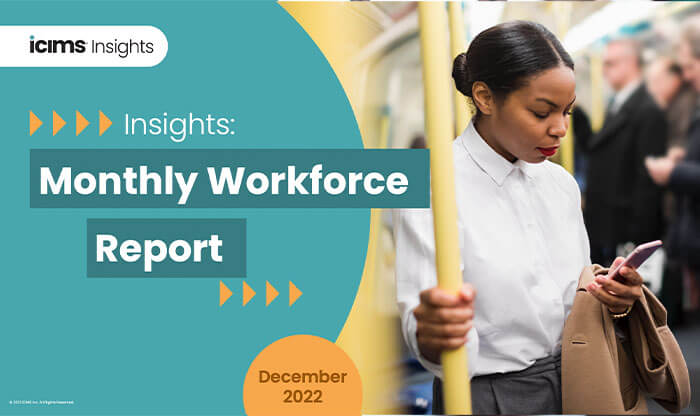
The downward trend in job openings, job applications and hiring continued through November. Although much is being said about the job market and business landscape, a slowdown in hiring is not uncommon for this time of year. iCIMS’ historical data highlights similar activity patterns in years past.
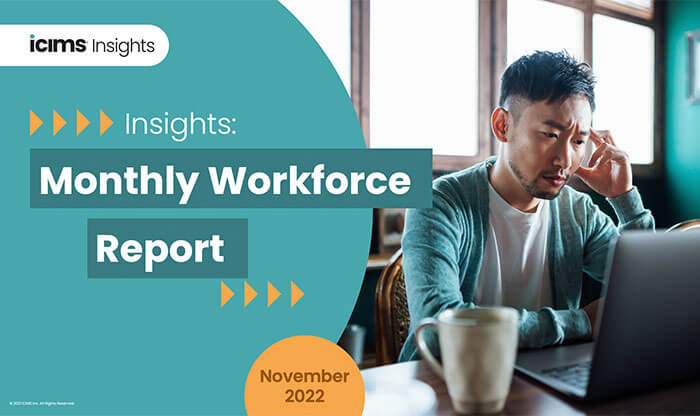
The 2022 talent market has been unpredictable. Job openings and hiring activity are close to January 2022 levels. However, both indicators are declining month-over-month, continuing the downward trend that began after August. Meanwhile, job applications activity has held steady month-over-month, remaining at one of its highest points of the year. Employer-talent dynamics are similar across the healthcare, manufacturing and finance sectors, and technology occupations. The retail industry bucks the trend, perhaps due to the upcoming holiday season.

Job opening, applications and hiring activity rebounded in August but has since started trending downward. This shift could signal an early seasonal downturn for 2022 (historically typical of end-of-year trends) or perhaps is a reaction to mounting macroeconomic pressures.
Workers continue to rethink work – from the company they choose to align themselves with to how engaged they are on the job. In fact, one in four people are just biding their time at their current employer in hopes of a bonus, gaining more experience, or a better opportunity coming their way.
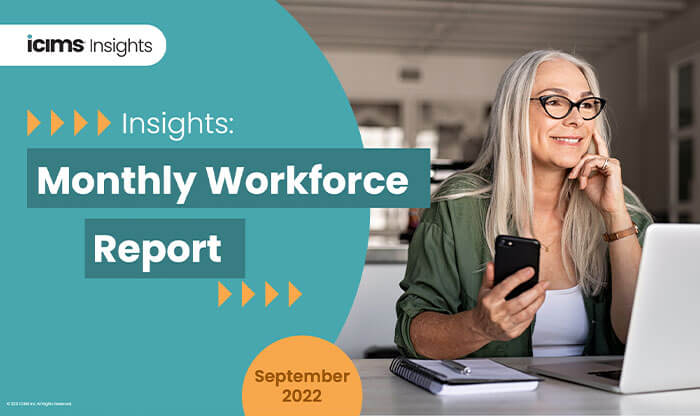
August brought a rebound in the talent market, following the July dip. Job openings, applications and hires are back on an upward trend – with application activity now at the highest it has been all year.
Employers may be turning to part-time workers to alleviate talent challenges – whether volume or skill-related – as the growth in part-time hiring has consistently outpaced the growth in full-time hiring since April 2022.

The talent market is still strong, but it is beginning to shift again. iCIMS data shows that job openings, applications and hires are all up from January 2022, but trending downward month-over-month. Activity levels are beginning to normalize from the extreme job growth demands we have been seeing the last year or so.
Job seekers continue to hold the power but there may soon be a shift in the dynamics between employers and talent. Employers that can be agile with their hiring strategies will be most successful as the landscape ebbs and flows.
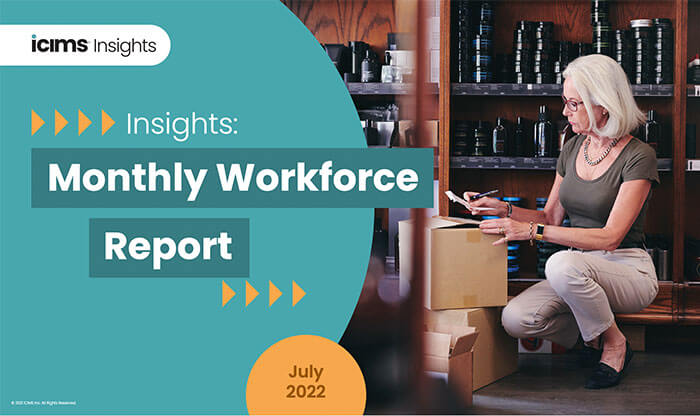
The talent market is still on a hot streak, despite reports of lay-offs and predictions of slowdowns.
Job openings, job application activity and hires have been on the rise since the start of this year. As we head into the second half of 2022, and into the busy back to school and holiday hiring seasons, applications in the retail sector are up 15% since the start of the year and 31% since April 2022.
Job seekers continue to hold the power and are keeping employers on their toes. Expectations are high, and if not met, talent has no problem walking away.

The 2022 business and talent landscape is ever evolving. Month-over-month, iCIMS data shows increases in job opening, job application and hiring activity. Paired with record-setting levels of resignations and all-time lows in layoffs (per the BLS), the numbers point to a continuing red-hot labor market. Tech workers continue to be in demand. Job openings and hires for tech roles are increasing across industries. Despite this surge in demand, candidates aren’t necessarily on the same page.

They might be young, but new college grads hold a lot of power in today’s labor market. The iCIMS Class of 2022 Report zeroes in on this new crop of talent and what they want as they begin to navigate the workforce. Get paid in crypto? Maybe. Dress up for work? Not so much. You can read the full report here.

Hiring is holding steady despite continued talent shortages and more selective job seekers. iCIMS data shows that talent is completing job applications and accepting job offers at lower rates than in years past. Entry-level candidates are applying with slightly more fervor than other workers. But positions aimed at this level of talent are also receiving fewer applicants per opening. More than ever, employers need to rethink how they approach attracting and engaging talent to stay competitive and be successful.
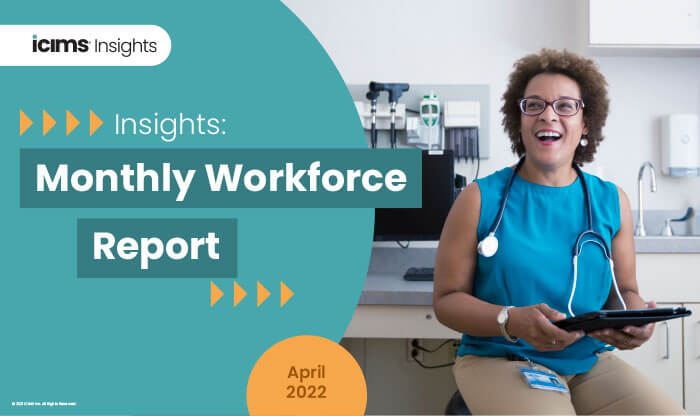
The workforce continues to evolve. We face a diminishing supply of job seekers, the make-up of our candidates is different, and business needs have shifted, meaning the jobs themselves are changing. The April Insights report provides a look into the latest labor market activity, with a special focus on healthcare, to help attract, engage, hire, and advance the talent you need now.

As employers and job seekers settle in to 2022, February brought a dip in job opening, job applications and hiring activity. Historically there is a decrease in activity in the second month of the year so these downswings may be nothing more than a seasonal trend – and activity levels are still trending above 2021 levels. However, as talent challenges continue, employers need to deploy more strategic approaches to attract talent

Learn how to navigate hiring and retention in today’s talent market with data-driven insights from our annual workforce survey report.

The gap between job openings and job applications decreased in January. Applications are up 13% since January 2021. While this is a shift from the downward trend in most of 2021, there is still a significant way to go before the talent supply will meet hiring demand.
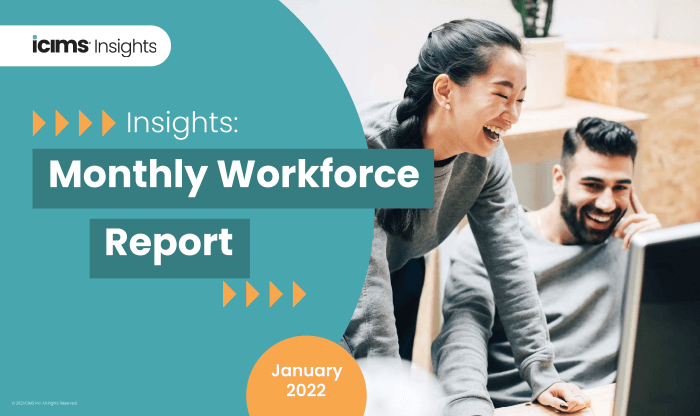
The demand for talent continued through the end of 2021, despite seasonal slowdowns in hiring and the resurgence of COVID-19 cases. Talent shortages remain a challenge for employers but there are job seekers out there… if you know where to look.

Historically there is a slowdown in job openings in November and December. However, this year, employers continue to open jobs with activity up 74% since the start of the year.

Hiring activity dipped in October, marking the first decline in hiring activity in eight months.

Discover what it’s like to apply for a job at the largest European companies, and see how your company stacks up, with our annual survey.

Learn key DEI trends and areas for opportunity in this special report from iCIMS & Talent Board.
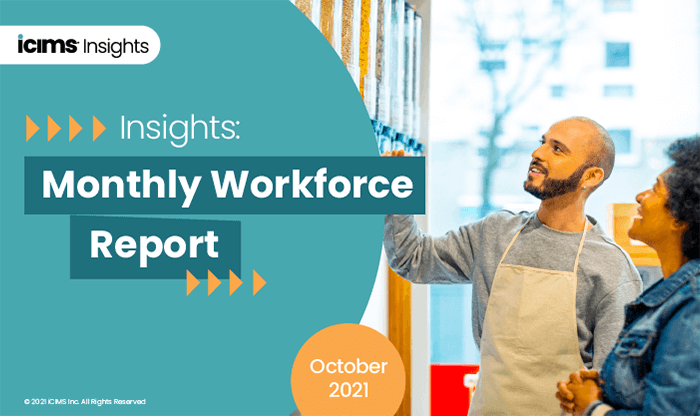
Job openings surged at the end of Q3. Applications are also increasing but not nearly enough to keep up with the demand for talent – especially in the retail sector.
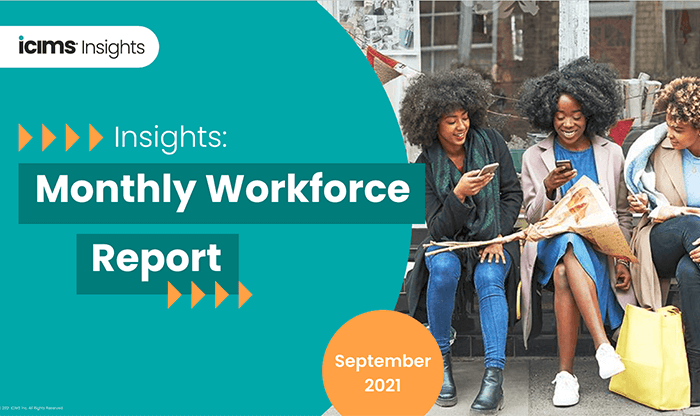
The hiring trend continues. With demand for talent outweighing the labor supply, employers must think about hiring differently.

Companies have been increasingly opening new positions and monthly hiring activity is exponentially greater than years past.

Companies continue to open new positions and hire amid rising but low levels of applications.
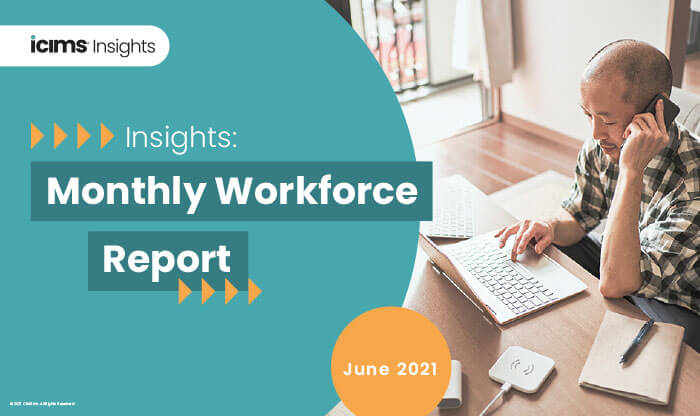
Labor shortages continue, but the latest job seeker behavior indicates there may soon be some relief.

Competition steepens as available talent continues to allude employers.

Learn how to navigate Gen Z hiring with our annual survey of HR professionals and recent university graduates.

The workforce continues to evolve. We face a diminishing supply of job seekers, the make-up of our candidates is different, and business needs have shifted, meaning the jobs themselves are changing.

Leading indicators point to a rebound in hiring coming soon. Job openings hold steady at a time of year they historically dip.

Employers are ready to resume hiring, but job seekers are submitting fewer applications than last year at this time.

Learn how businesses are responding to remote work and virtual hiring, accelerating digital transformation initiatives, enhancing team collaboration, and focusing on diversity, equity, and inclusion (DEI) programs.

Job opening activity is no longer correlated to rising COVID-19 cases, signaling a shift in how employers are reacting to the pandemic.

As predicted, job openings, applications, and hires continue to trend upward with job opening activity surpassing where it stood during this time in 2019.

Overall hiring activity in Q3 (July – September 2020) shows promising behavior on behalf of employers. Read more to learn about changes in the retail industry, as well as gender equality in the workplace.

What’s trending in hiring this month? Read the September Snapshot report for the latest on diversity talent trends, retail hiring, and more.

Job opening activity has increased 70%. Read more of the latest hiring trends and insights in the August Snapshot report.

Hiring activity is rebounding, with female and minority hires leading the way. Learn more in the July Snapshot report.

The June Snapshot report includes the latest in hiring activity insights, including signs of a return to pre-pandemic hiring activity and the workforce’s response to the lessening of restrictions across the country.

The class of 2020 is graduating into an unprecedented job market. While current realities make this year unlike any other, 2020 graduates still have hopes to land their first job and dreams of what that workplace will look like.

Learn how employers are screening and finding top entry-level talent –and how much they should expect to pay them—in iCIMS’ Class of 2019 report.